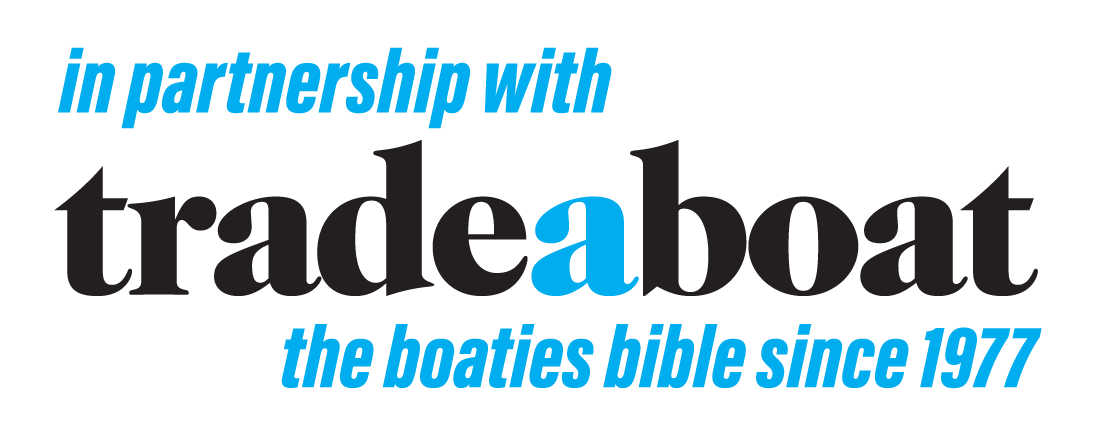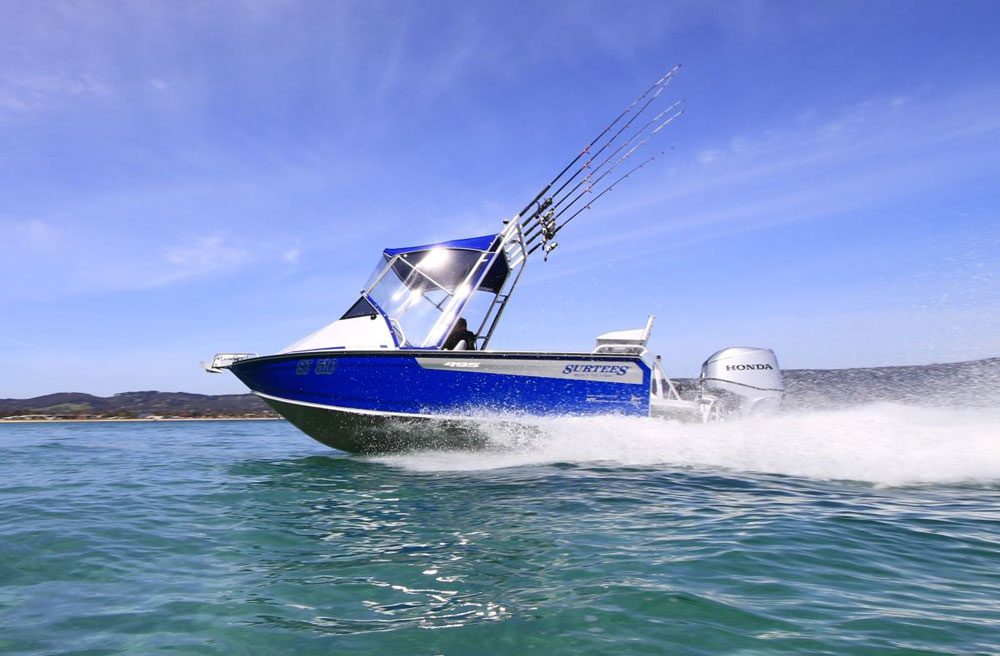
The Essential Guide to Buying a Used Boat
Boating can be one of life’s most incredible experiences, especially if you own and skipper it yourself. It can be a personal experience or a more sociable affair with friends and family. Sometimes boating is exciting, other times calm and relaxing – yet every boating journey is a memorable experience.
Currently, new boats seem to have become horrendously expensive, perhaps making the dream unaffordable at this point in your life. Then again, you may be like me and see value in buying a used boat. I use this principle for all my large purchases where tax and other financial incentives are not applicable. Some may see it as “buying someone else’s problems, " but I don't believe it. Life changes for all of us, so sometimes we need to capitalise on our purchases. Some sellers may be upsizing, whilst others down, and others are merely changing lifestyles. Let’s face it, we all want to grab a bargain!
I have spent most of my life in, on, around and trading in sometimes new but mainly used boats. I reckon I have pretty much seen and heard them all! The principles remain the same in big boats or small, so let’s see if I can share some of that experience with you.
Which Boat?
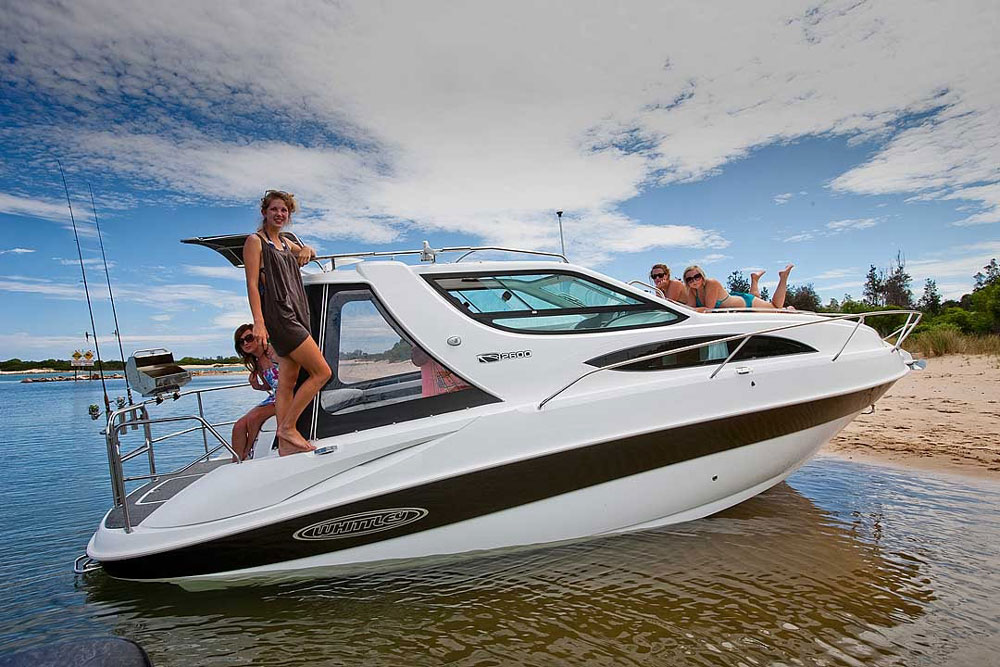
The principles for buying a boat to suit your purpose are virtually identical for both new and used packages; however, the used boat buyer has quite a few more considerations to keep in mind while browsing all those tempting used boats for sale.
Important considerations before buying a used boat include:
-
Budget
-
Intended application (offshore/inshore, fishing, cruising, water sports, diving, etc) destinations, expectations
-
Towing vehicle, storage, mooring
-
Construction, mechanical and electronic
-
Age, year, condition
-
Brand and resale
-
Ownership, registration
-
Accessories and fit-out
-
Insurance and finance
Some Advice on Where to Get Advice
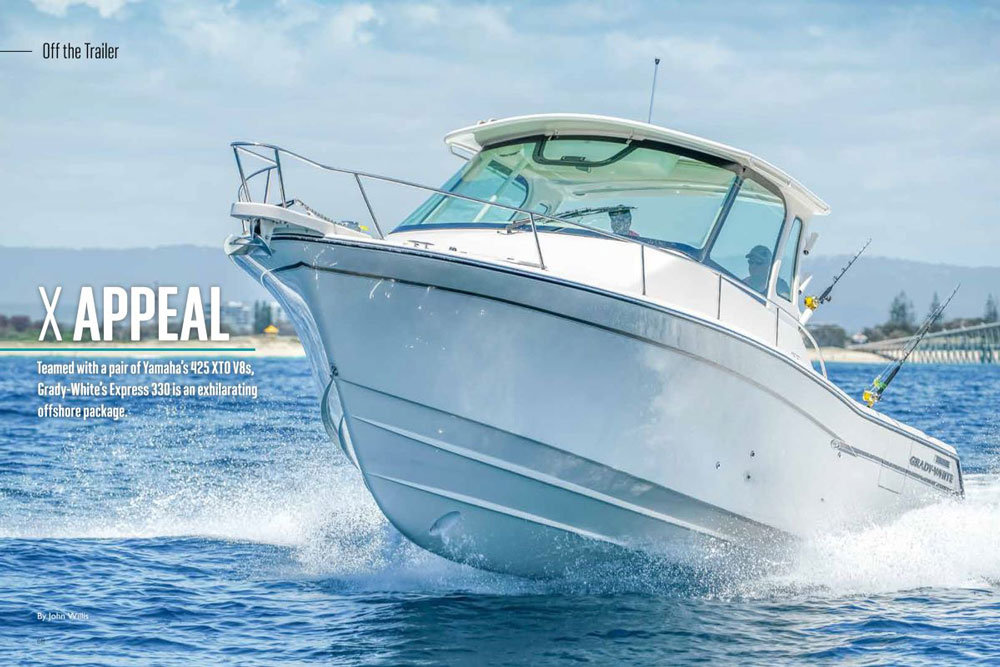
Be careful where you take advice. The fellow next door may have entirely different needs and applications than you, and while experienced advice is always to be heeded, ensure the package is right for you.
Beware of the social media experts. Most are jaded by brand and personal application. Some have no experience or qualification at all! It’s worth considering that bad products mainly don’t exist or survive in today's competitive market. Indeed, there are products built to a price, but they may well be tailored to budget and application.
Do your homework at dealerships, boat shows, and media, particularly online, remembering that, in this day and age, most commercial media can reflect advertising spend. I have always said, “Review the reviewer before you read the review!”
While there’s a boat for every budget, safety has to be the overriding priority. Remember, if something goes wrong on the water, you can’t just pull over and wait for roadside assistance to come to the rescue. Safety is paramount, and it’s only possible with a well-equipped, capable, and properly maintained boat package—including the engine and trailer.
Budget
Budget is the number one priority. You need to be comfortable with your spending, or you may grow to regret the purchase. After all, whilst I consider my boats to be essential parts of my life, they are still recreational products. Family, health, housing, investments, and other interests may take priority.
You may be able to pay cash, so good for you. However, considering suitable boat financing often has some terrific advantages, such as being able to afford a more appropriate, perhaps newer craft that better suits your needs. This may also eliminate the stepping stone effect of buying and selling, sometimes multiple times, to eventually get to your perfect boat.
Some finance and insurance companies have strict policies on used boats. Age limits, condition reports, and purchasing criteria restrictions may apply. Many finance companies demand that all new and used boats be purchased from a registered dealer or manufacturer to ensure the purchase is in the market price range.
Application
Searching for a suitable used boat is much easier if you have a fairly narrow interest range. If you’re looking to buy a jet ski, a wakeboard, a ski, a surfboat, or even buy a houseboat, your defined range narrows the search. However, general trailer boat buyers have many more questions and options.
You may be after a general-purpose craft for limited expeditions on your local waterway with the occasional holiday to other destinations. Others may be looking for a serious offshore contender, perhaps a fully equipped fishing boat with plenty of room for all your apparel, fishing and safety gear. Maybe you're after a chardonnay cruiser, a passage maker, a water sports specialist, a race boat, a paddle craft, or perhaps just a small tinny for remote sweetwater adventures. Some will look for a combination of boating pursuits. It is a very personal decision.
Towing, Storage, Mooring
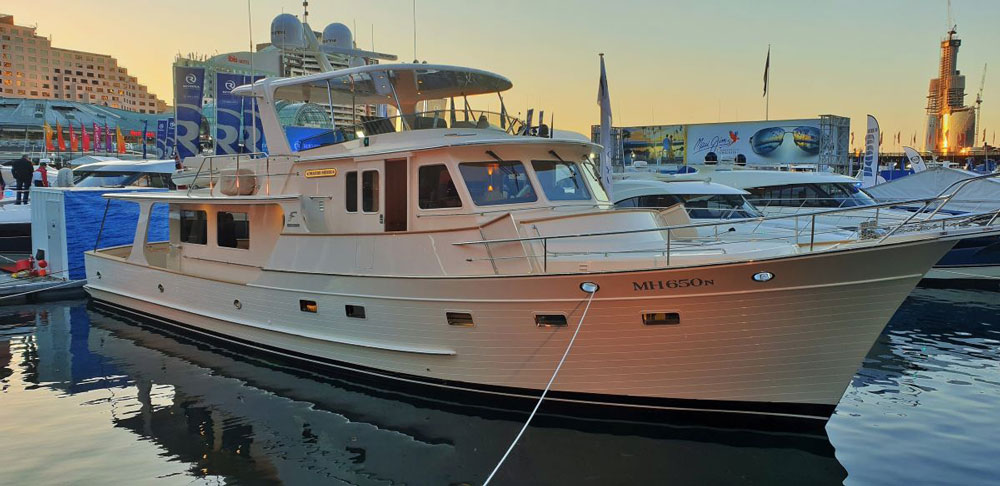
It seems that in life, almost everyone aspires to more significant, grander opportunities. Yet in boating, the quest for a bigger boat often turns full circle when you realise that bigger does not always mean better. The best boat is the one that makes you safe and comfortable and makes your boating easy so you will happily use it.
Consider all the options before committing to that used boat of your dreams. Considerations may include weight, storage restrictions such as height, access restrictions such as primary boat ramps and even bridge height, plus the associated ongoing costs and maintenance.
Construction, Power and Engine Type
Fibreglass and aluminium are by far the most popular hulls; however, plastic, inflatables and PWCs (Personal Water Craft) have grown in popularity immensely. Then, of course, there are yachts, row and paddle craft, houseboats and more.
The Hull
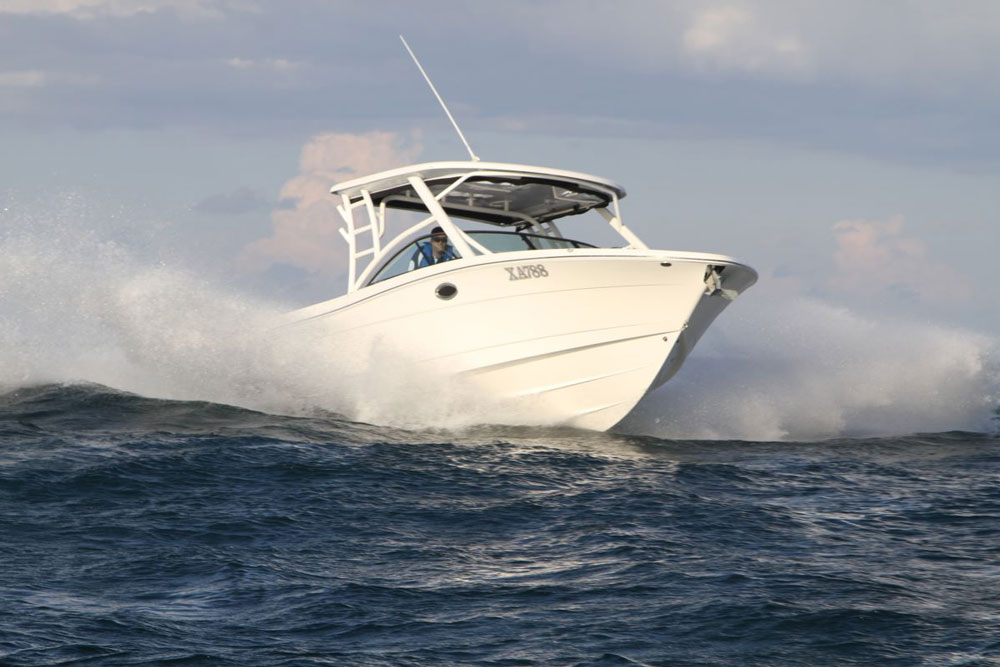
Fibreglass is a solid yet impact-resistant synthetic material that can be moulded to complex forms, creating the ability to design stable, soft riding and visually appealing boats. Fibreglass boats were traditionally built with timber reinforcing in the transom, stringers, bulkheads, and floor. Over time, water can ingress into the timber, causing rot and weakening the hull integrity. Nowadays, most manufacturers (but not all) are utilising modern synthetics to replace timber, eliminating many problems, yet it can cause other problems, including fibreglass delamination. If you're looking at fibreglass boats for sale, be on the lookout for delamination.
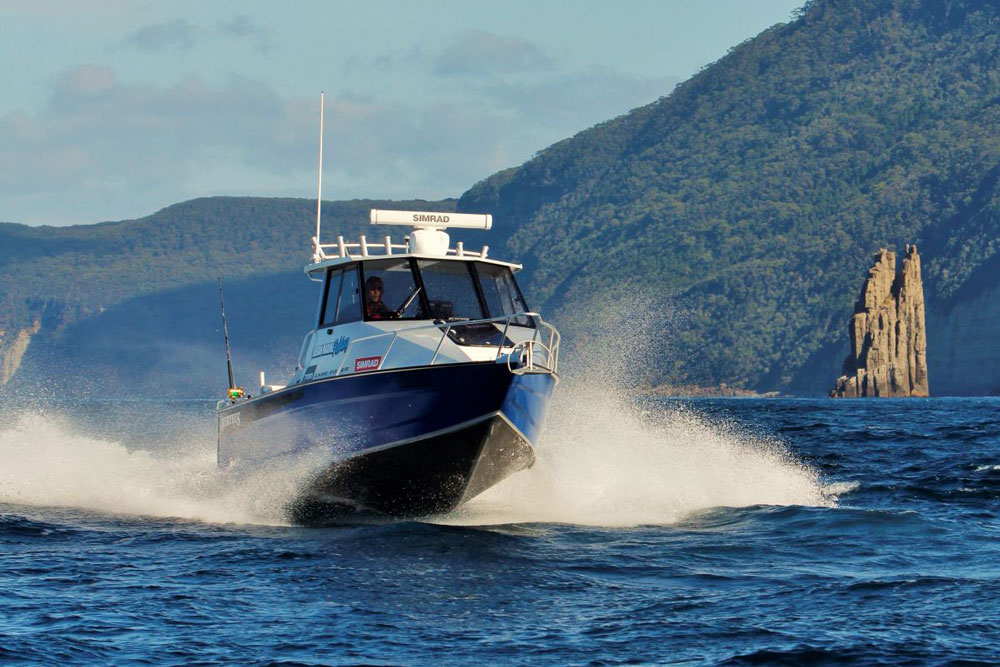
Many boaters prefer aluminium hulls for their lightweight strength. Aluminium boat construction is most often formed by either welded plate aluminium (generally 4mm or greater in thickness) or high-production boats under 5.5 metres in length, made from pressed aluminium sheets that are generally up to 3mm thick. In past years, aluminium was always considered less comfortable riding than fibreglass due to design and manufacturing limitations and impact absorbency. However, modern techniques have mostly evened the playing field.
Aluminium boats can be left raw in finish, painted, or treated with protective finishes such as Nyalic. Whilst very ridged by nature, aluminium may suffer fatigue on stress points, particularly around welds. It can also suffer significantly from corrosion, often incorrectly termed electrolysis. This is mainly caused by the alloy's contact with non-compatible materials such as fasteners, fittings, sealants, and moisture-retaining contacts.
Therefore, cracking and corrosion are the two most prominent points of degradation for all aluminium boats, so care must be taken to look for corrosion bubbles, oxidation, or weld cracks—they can be very hard to see! This will be a key check for you if you're browsing aluminium boats for sale.
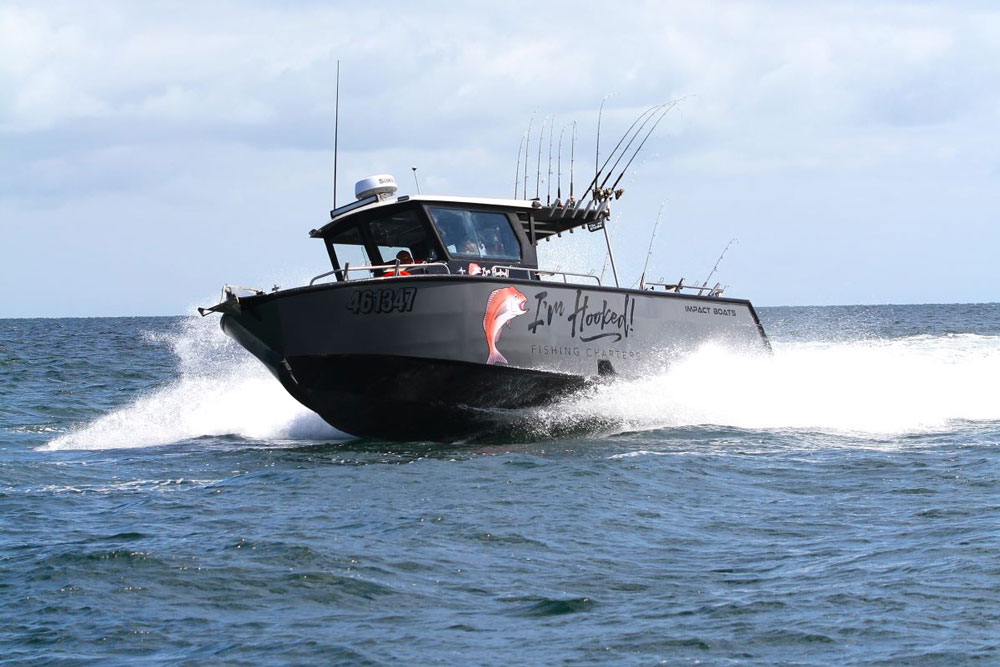
Plastic boats can be rotary moulded or sheet-formed and welded, similar to plate aluminium. They are mostly solid and extremely impact-absorbent. I have been involved in demonstrations where plastic defeated fibreglass for damage after being hit with both sledgehammers and an axe!
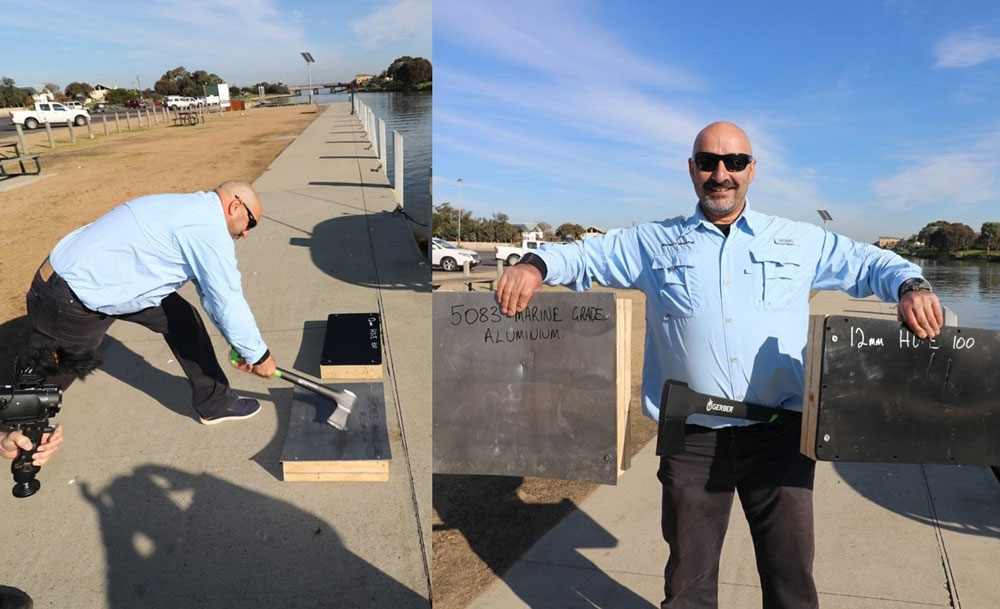
There are fully inflatable or RIB, Rigid Inflatable Boats, and both have tremendous rough water and safety characteristics. RIBS most often have a fibreglass hull with inflatable sides. The soft inflatable material is actually very strong, but care must be taken to ensure there are no punctures or similar hull damages, as well as a full inspection of the bottom sides condition.
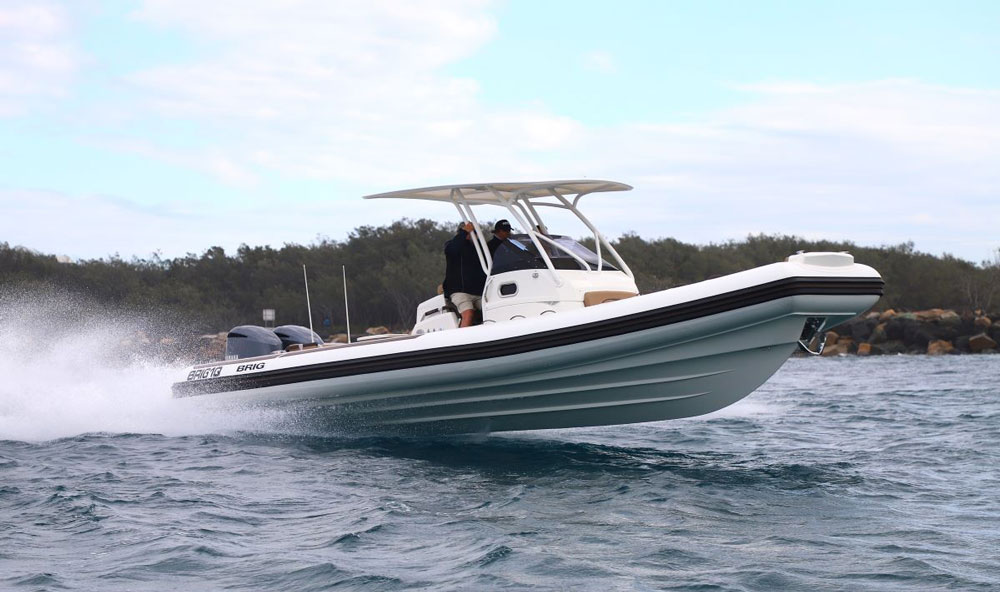
All Hull Inspections Should Include:
-
Construction material
-
Main floor/deck
-
Side and bow decks
-
Seating and trimming
-
Fuel tanks, fillers, filters, and hoses
-
Corrosion or electrolysis
-
Windscreen and wipers
-
Bimini and clears
-
Sea Cocks, skin fittings, and hull penetrations
-
Doors, windows, lockers, and hatches
-
Rub strip / rails
-
Hull condition above waterline
-
Hull condition below waterline
-
Swim platform & ladder
-
Transom condition
-
Antifoul, anodes
-
Materials, impact damage, stress damage, wear and tear, delamination, rot, osmosis, electrolysis, delamination, corrosion, rust, fatigue, anti-foul, fade, crow’s feet, stress, hooks, cracking, fracture
-
Registration and ownership details
-
Hull identification number and manufacturers ID plate
-
Safety gear
Mechanical and Electronic
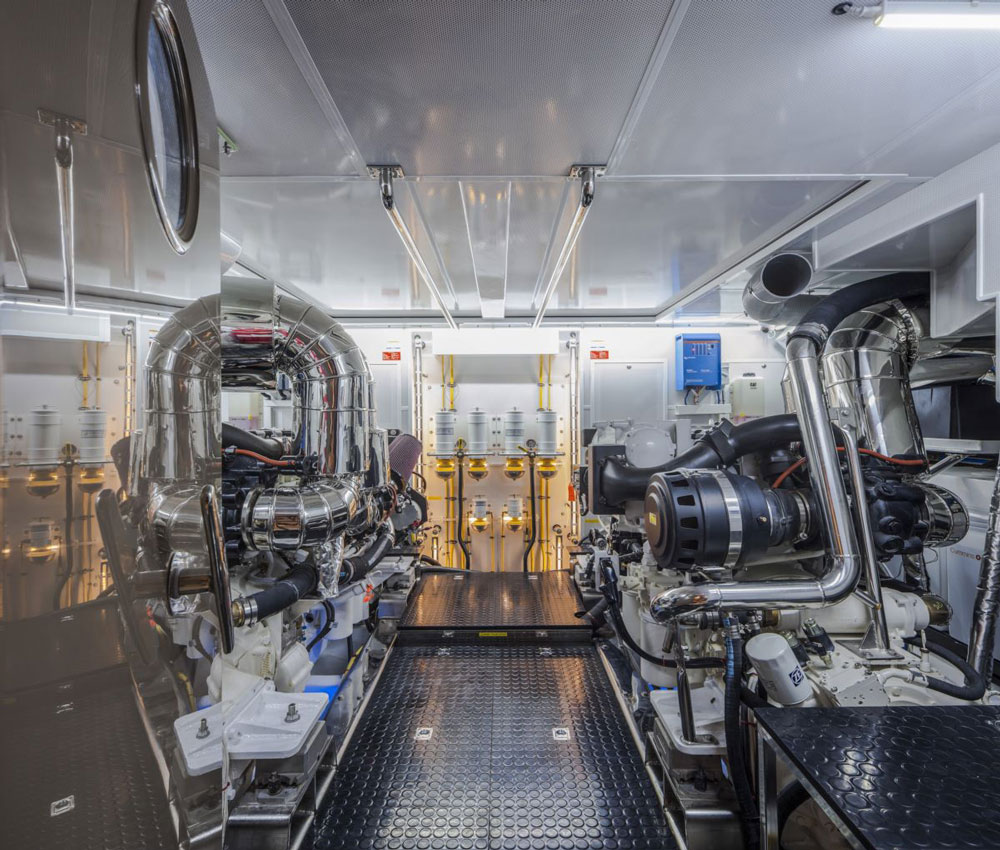
Marine propulsion is another very costly component of a boat package and hence demands a thorough inspection before purchasing a used boat. In fact, in some cases, the engine/s and drive mechanism are worth more than the hulls. Hence, a professional examination carried out by a qualified or certified marine technician should be enacted for any purchase of a used boat.
We obviously want to see a good, clean engine, preferably with a detailed service and maintenance record and low hours; however, trouble can strike without warning, even on reasonably new engines. An expert inspection will evaluate all the outward componentry and inspect the cylinder compressions, electrical circuitry, gear box oil, etc., and can also perform inward tests such as oil sampling to thoroughly test the engine's condition.
All mechanical and electronic inspections should look out for rust, electrolysis, corrosion, compression, shaft slap, ingress and emulsification, fuel, filtration and contamination, glazing, marine electronics and circuitry, engine and drive types, environmental regulation, fuel and oil types and consumption, seals, anodes, steering, pumps, cooling systems, fire suppression, safety equipment and more. The larger the boat and the more equipment the more inspection time is required ie generators, refrigeration, water strainers, air conditioning, galley, entertainment and electrical systems.
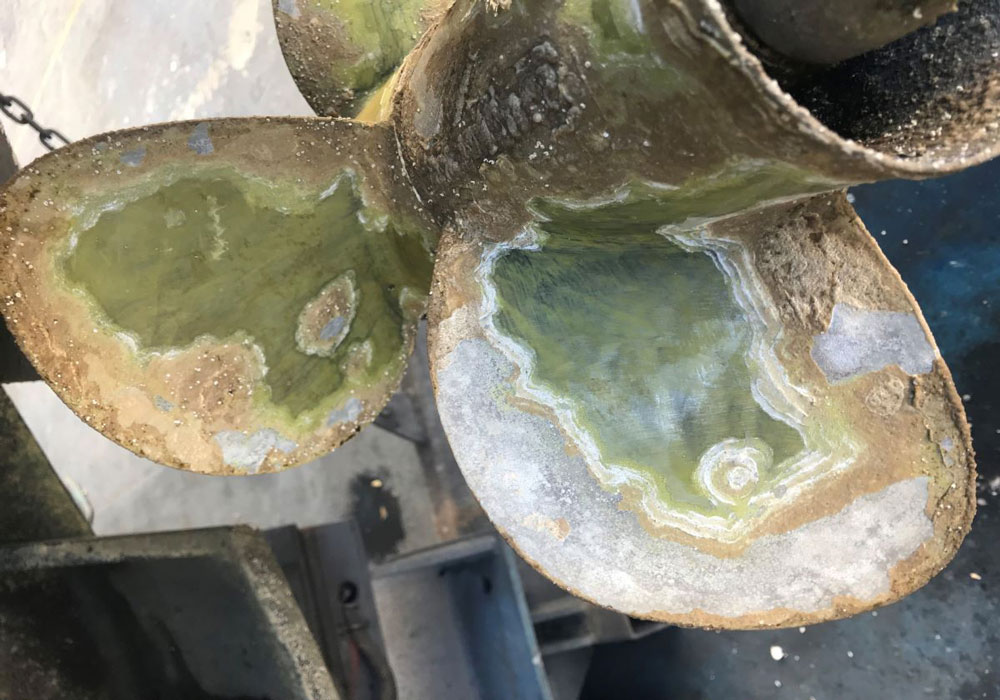
All Engine Inspections Should Include:
-
Engine Hours
-
Compression Testing Conducted
-
Manual or Electronic Testing
-
Cylinder Compressions (In Order)
-
Engine Controls
-
Engine Indication
-
Engine Oil Visual Inspection
-
Trim Tabs / Planing / Stabiliser Systems
-
Engine Cooling System / Tell Tails
-
Engine Bay Ventilation (Inboards)
-
Gearcase Condition
-
Gearbox Operation
-
Trim and Tilt Operation and Indication
-
Steering Type
-
Steering and Rudder System
-
Propeller
-
Engine Mounts
-
Functional Test Observations
-
Leaks and Salt Residue
-
Bow Thrusters
The Boat Trailer
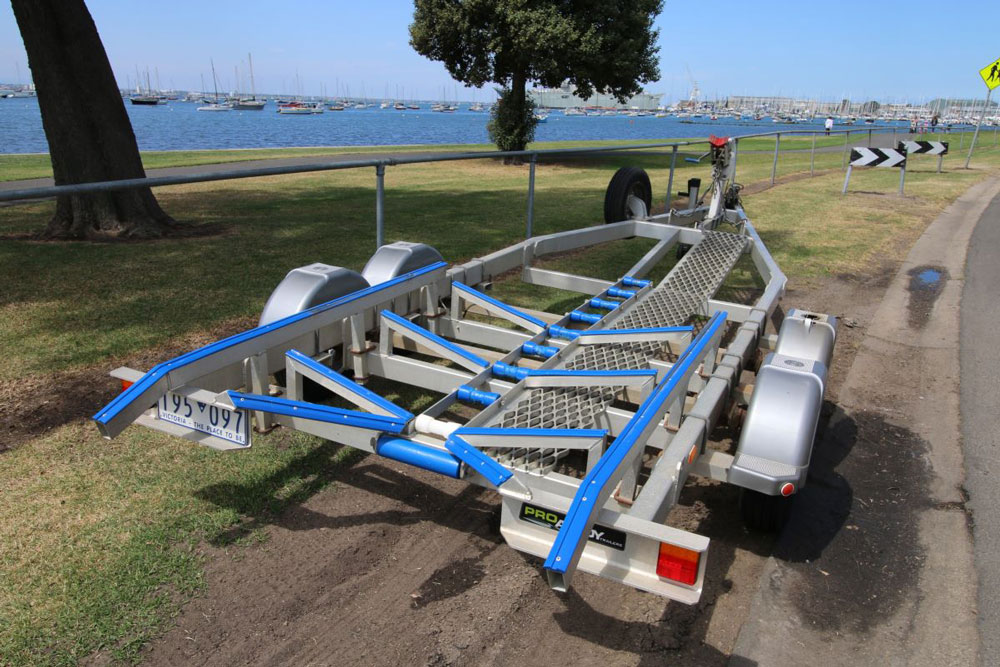
While often overlooked, the boat trailer is a key component for any transportable boat package. Boat trailers come in many forms, including steel, aluminium (or a combination), and even some synthetic materials.
Boat trailers are regularly dumped in salt water, and hence, the corrosion factor is high, and a thorough inspection is warranted to prevent a major structural failure for any used boat purchase. Traditionally, boat trailer frames were mostly manufactured from galvanised box-section steel, so the retained water often remained inside the frame, causing rust that was unable to be detected from the outside.
Trailer manufacturers often saved money by not using stainless steel washers to retain their wobble rollers, causing the rollers to fall off under load, causing nasty damage to the hull it was supposed to be supporting. Many trailer components, such as axles, springs and brakes were not effectively treated or galvanised to minimise rust and corrosion and so-called trailer lights often leaked like a sieve causing unroadworthy trailers.
Trailer wheel bearings, brake shoe condition, retaining straps, and winch and winch straps are among the many components of a used boat package that require a thorough pre-purchase inspection.
A large consideration is trailer braking and load regulations that have changed regularly over the years, as well as the load limits and ability of your proposed towing vehicle. It often occurs that a trailer that is legally registered in one State may be transferred within, but should it require re-registration in another State, it may not comply.
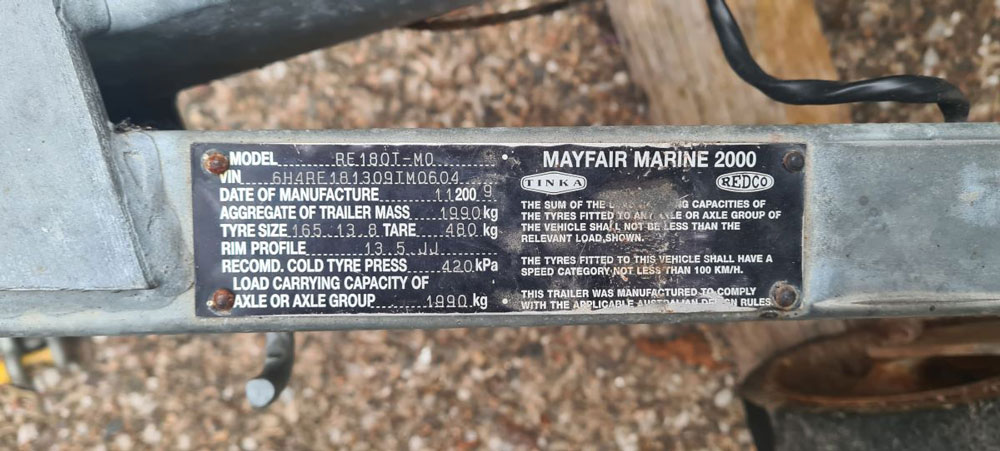
All Boat Trailer Inspections Should Include:
-
Thorough check of the compliance plate. Trailers manufactured after 1990 should include a 17-character VIN, Manufacturer's Name, Trailer Model, Vehicle Identification Number, Date of Manufacture (month/year), Aggregate Trailer Mass (kg), Gross Trailer Mass (GTM), Tare Mass, plus other variance dependent on year and state.
-
Registration and ownership details
-
General condition ie rust, corrosion, fatigue, welds etc
-
Towing coupling condition and weight rating
-
Handbrake condition and adjustment
-
Compliant safety chains and shackles
-
Compliant braking system for trailers 750kg+ (see relevant ADR – Australian Design Rules)
-
Axles, springs, bushes and shackles
-
Rollers, bunks, “Teflon” guides and supports
-
Rear swing arm (if fitted)
-
Lighting condition and regulation
-
Weight rated tie downs
-
Winch post and supports
-
Winch including pawl and strap/cable
-
Bow safety chain
Electrical Systems Observations

Electrical systems are a key component of all used boats, and they require a qualified technician to thoroughly inspect. See the following components as a minimum engine inspection list.
-
Batteries fitted
-
Batteries tested
-
Batteries adequately secured
-
Battery chargers / solar systems / shore power / generators
-
Battery isolators and breakers
-
Boat system instruments
-
Navigation lights
-
Electrical wiring looms and distribution
-
Bilge pumps and float switches
-
Navigational equipment
-
Cabin and deck lighting
-
Entertainment systems
-
Toilets, holding tanks, and macerator pumps
-
Fresh water systems tanks and pumps
Boating Safety Equipment
Of course safety equipment is absolutely crucial and heavily regulated for all boating. There are varying requirements for every State and changes for inland, coastal and offshore navigation.
Some boat safety items include:
-
Regulation life jacket for each person on board (serviced)
-
Flares (coastal/offshore)
-
Bilge/bailing bucket
-
Anchor / Chain / Rope
-
Electric Winch (not mandatory)
-
VHF Radio (varying regulations)
-
EPIRB (offshore)
-
Horn (offshore and recommended)
-
Fire Extinguisher
Age, Year, Condition
How old is too old? Well, thankfully, if properly cared for and maintained, and treated to regular and professional services boats may not deteriorate badly. In fact, fibreglass actually continues to cure and strengthen with age, allowing of course, for the reinforcing condition, timber etc. Similarly, aluminium should not deteriorate unless corrosion is active. Plastics now have strong resistance to UV, as do many inflatables.
There is a strong interest in many “Old School” boats, as it is often true that the designs and constructions were quite revolutionary. These boats are mostly beautifully rebuilt, restored, and refitted, gaining resale prices close to those of new boats.
Hence, the year of the hull is not as important as its engine and accessory upgrades. Older 2-stroke engines and non-supported brands are terribly hard to sell, but they may still provide a cheap and reliable alternative on the used market. Yes, they do use a lot more fuel and have greater emissions, including fumes, but they may get you out on the water, reducing the cost of such an expensive purchase.
There is also a movement toward “pod” conversions to older hulls, some replacing older stern drive units. It is absolutely crucial to thoroughly inspect any aftermarket inclusions such as pods, and make sure you do a complete sea trial to ensure the set-up is suitable. Aftermarket conversions are rarely carried out by professional marine technicians so take great care.
Look out for any obvious signs of stress cracking or repair work, indicating hard wear and tear or previous damage. Note that carpet and paint can hide many misdemeanors in a damaged, used boat! Be very mindful of how many engine hours the rig displays, and does it seem to match the general condition and service history.
Brand And Re-sale
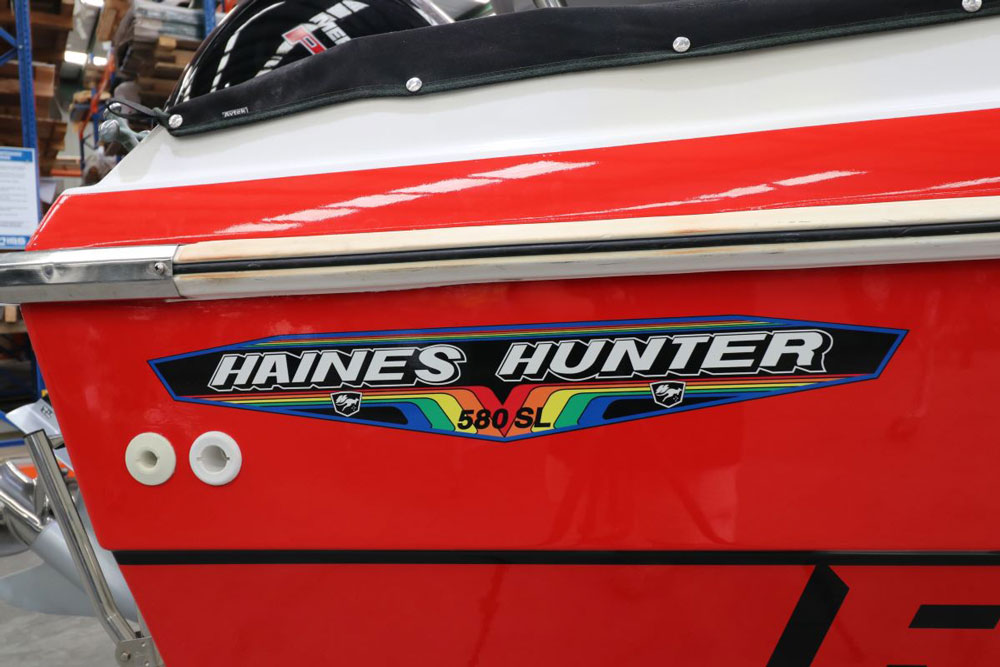
As with all products, premium brands always retain the highest resale prices. They are also usually an assurance of quality consistency.
Unlike cars and most machinery, second-hand boats generally demand excellent re-sale valuations. Prior to GST, used boat dealers would value the most well-presented packages as losing the 10% sales tax plus 5% for every year out to five years. Hence, a 5-year-old boat in excellent condition would retail at around 10% + 25% of its original purchase price. The good news is that after that initial depreciation they would actually appreciate in value.
Many secondhand boats currently on the used boat market have appreciated dramatically, especially since the great rush during COVID and the recent inflation in new boats.
Ownership, Registration
As much as we hate to admit it there are crooks in all walks of life. The last thing you want is to purchase the boat of your dreams only to find out that it’s been a stolen craft, written off trailer, finance owing or some other legal commitments. The great news is that there are ways to protect yourself and your dream purchase.
Check the HIN and VIN numbers with the relevant road registration authority for details on ownership, finance, and the write-off list. Ask for copies of all the proper documentation including receipts, registration details, service, repair and accessory purchases, to establish a history.
I always ensure that the seller signs/provides a Statutory Declaration re the ownership of the package, and trust me as a dealer it has saved me on more than one occasion!
As discussed previously, make enquiries to ensure the package can be legally transferred, particularly the conditions of buying interstate.
If buying through a dealer, enquire as to Warranty terms and conditions – and read the fine print! As with any second hand boat it may still be required or worthwhile employing a qualified marine surveyor to confirm your purchase.
Accessories and Fit Out
Get the base boat, motor, and trailer package right, and then worry about the accessories. However, custom stainless steel products, canopies, electronics, anchor winches, safety equipment, and other accessories can be frightfully expensive, so their inclusion/exclusion should be considered in the purchase price – but make sure that they are all in good operational condition.
Insurance And Finance
As previously discussed, prepare your budget and finance conditions before you commit to a used boat. Go shopping, and if you do find the right boat, put a holding deposit on it with a written receipt, making the deal subject to satisfactory finance and insurance conditions, a qualified independent boat inspection and finally, a suitable water test.
Many finance companies demand that you purchase through a registered marine dealer and NOT a private seller ensuring the package is at market value, guaranteed ownership etc.
You may find that the insurance company will have added requirements for older boats, including a professional inspection to ensure the boat is seaworthy. If the deal goes ahead, ensure you have the insurance in place from the moment you take possession.
Where Do I Find My Dream Boat?
Today’s age of multimedia advertising has made it quite simple to find the right boat that tickles your fancy and then reference your selection. Websites like Only Boats provide thousands of offerings of boats for sale, all showcased with easy reference. We have everything cheap boats for sale to yachts for sale, and thousands of options in between. You can use the search functions to find suitable boats in your area and price range, and then compare the advertised price with similar packages.
Media outlets have also compiled a huge volume of qualified testing and product evaluations with professional opinions on boats, motors, electronics and accessories. But beware of unqualified keyboard cowboys making their name in media and forums.
Go down to the marina or boat ramp and talk to seasoned boaters and search the brands, styles and sizes. Take particular note of those that make their boat launch and retrieve easy, and how. You may wish to go to a Boat Show and search the local retailers to dream build and qualify your search. Ask questions: see, feel and touch the options; talk to the sales staff and consider purchasing from a registered dealer who just may have your perfect boat at a very competitive price with assured ownership and warranty.
Purchasing and Financing a Used Boat
When you have finally arrived at that ideal package, then pay a reasonable price. I have seen many purchasers walk away from their perfect boat just because they can’t beat the seller down on their price, and only to return to find the package sold to a wiser customer!
And if you need boat finance, at Only Boats we recommend Credit One. With a average of 5 stars from over 1800+ Google Reviews, Credit One are accredited with over 40 leading Australian financiers and insurers. Credit One is able to offer low-rate finance solutions on the full Only Boats vehicles range.
I hope this comprehensive summary leads you to a smooth purchase process. Enjoy your boating journey – it really is one of life's great pleasures.
Found your perfect purchase? Let’s make financing just as easy!
Work with Australia’s best-reviewed finance broker for a great deal and a stress-free experience. With 2,500+ glowing Google reviews, you can trust you're in good hands! See what our happy customers say in Credit One reviews, or jump right in and crunch the numbers with our handy loan repayment calculator. Your ideal financing solution is just a few clicks away!
